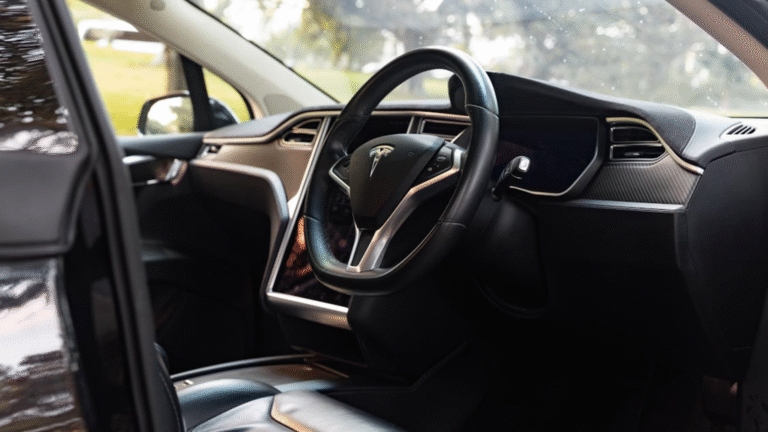So, you’ve just driven off in your first electric vehicle. Congrats! Whether it’s a Tesla, BYD, Polestar, or something else with a plug, your first month as an EV owner will likely be filled with excitement—and a few surprises.
While EVs are simpler to maintain and quieter to drive, they do come with a learning curve. From charging habits to road trip planning, here’s what most Aussie drivers learn fast in their first 30 days behind the wheel.
Table of Contents
- Charging Habits Are Everything
- Range Anxiety Fades—But Doesn’t Disappear Overnight
- Regenerative Braking Takes Some Getting Used To
- You’ll Obsess Over Charging Apps and Maps
- Your Power Bill Might Go Up—But Fuel Costs Drop
- Everyone Has Questions (and Opinions)
- Servicing? What Servicing?
- Final Thoughts
1. Charging Habits Are Everything
One of the first habits you’ll build is plugging in—not just when you’re low, but often overnight. Most EV drivers quickly get used to topping up at home like they would a smartphone.
Public fast charging is great for road trips, but for daily driving, home charging is king—especially if you’ve got off-peak rates or solar panels. Many new EV owners realise that a 100% charge isn’t always necessary and that 80% is ideal for battery longevity.
Tip: Set your EV to charge during off-peak hours if your plan allows it—it can make a real difference to your bill.
2. Range Anxiety Fades—But Doesn’t Disappear Overnight
Most EVs sold in Australia today have 300–500 km of range, which covers the vast majority of daily driving needs. Still, in the first few weeks, it’s natural to check your range more than necessary. You’ll learn fast how far you can really go on 20%, when to top up, and which roads use more battery.
By the end of your first month, you’ll probably be far less anxious—especially once you’ve done a weekend getaway and realised you didn’t need to panic.
3. Regenerative Braking Takes Some Getting Used To
Many Aussie drivers new to EVs are surprised by how different braking feels. Regenerative braking slows the car as soon as you lift your foot off the accelerator, feeding energy back into the battery.
It’s a bit jarring at first, but once you get the hang of it, it becomes second nature—and you’ll barely use your brake pedal in city traffic.
Some EVs even let you adjust the regen strength or switch to full “one-pedal driving.”
4. You’ll Obsess Over Charging Apps and Maps
Your phone quickly becomes part of your charging toolkit. Apps like PlugShare, Chargefox, and Evie are invaluable for locating chargers, checking availability, and reading user reviews of each site.
In the first 30 days, you’ll probably:
- Try your first DC fast charger
- Learn which public chargers are reliable (and which aren’t)
- Save a few charging stops in your sat-nav
Bonus: Many new EV drivers also get hooked on real-time efficiency tracking through the car’s app or display. It’s like gamifying your driving.
5. Your Power Bill Might Go Up—But Fuel Costs Drop
It doesn’t take long to realise you’re spending a lot less on fuel. Even if your electricity bill increases slightly due to home charging, it’s usually nowhere near what you’d spend at the bowser.
Example: Charging an EV with a 60 kWh battery at $0.25/kWh will cost you about $15 for a full charge that delivers 350–450 km of range—often less if you have solar.
First-month lesson: You’ll start calculating “cost per kilometre” and wondering why you ever paid $2.20 per litre.
6. Everyone Has Questions (and Opinions)
“Where do you charge it?” “How far can it go?” “Is it really better for the environment?”
Within days of owning an EV, you’ll become the unofficial spokesperson for electric vehicles among your family, mates, and coworkers. Expect a lot of curiosity, plus a few skeptics.
Pro tip: Be patient. Most people are genuinely interested, and your positive experience could be the nudge they need to go electric themselves.
7. Servicing? What Servicing?
One thing you’ll learn pretty quickly is how little ongoing maintenance an EV needs. No oil changes, spark plugs, or timing belts. Brake pads last longer thanks to regenerative braking.
In the first month, many drivers realise how much time—and money—they’re likely to save in the long run.
Of course, tyre rotations, cabin filters, and software updates still matter, but your mechanic will probably see you less often.
8. Final Thoughts
The first 30 days with an EV are a mix of “wow, this is amazing” and “oh, I didn’t know that.” But by the end of the first month, most Aussie drivers find themselves fully adapted—and wondering why they didn’t make the switch sooner.
EVs might drive like a dream, but it’s the shift in mindset—from fuelling to charging, from engine to software—that really defines the journey.
What do Aussie drivers learn in their first 30 days with an electric car? From charging habits to public charger tips, here’s what to expect during your first month of EV ownership.
